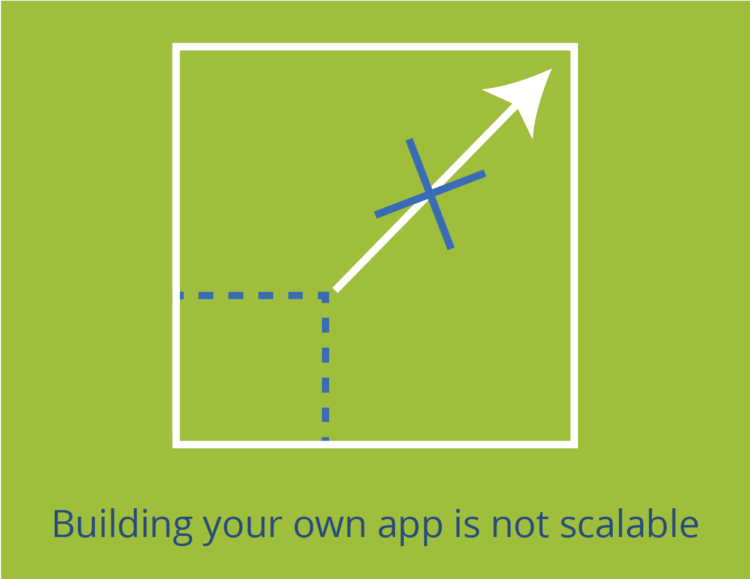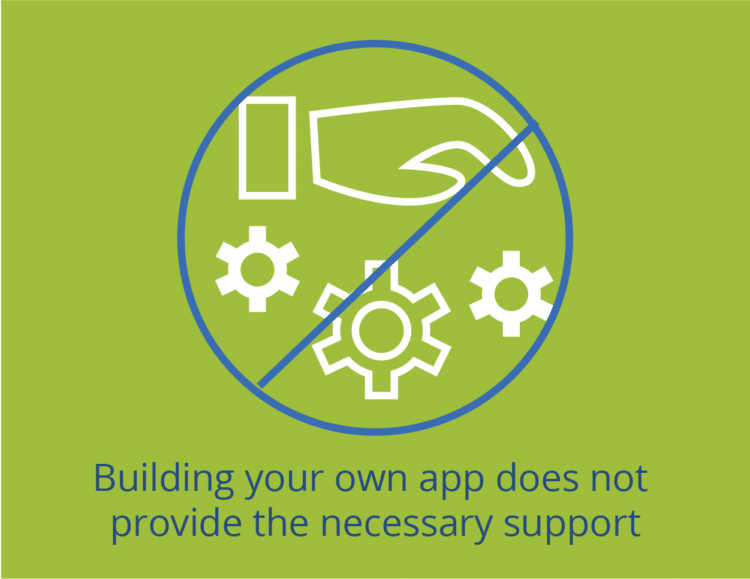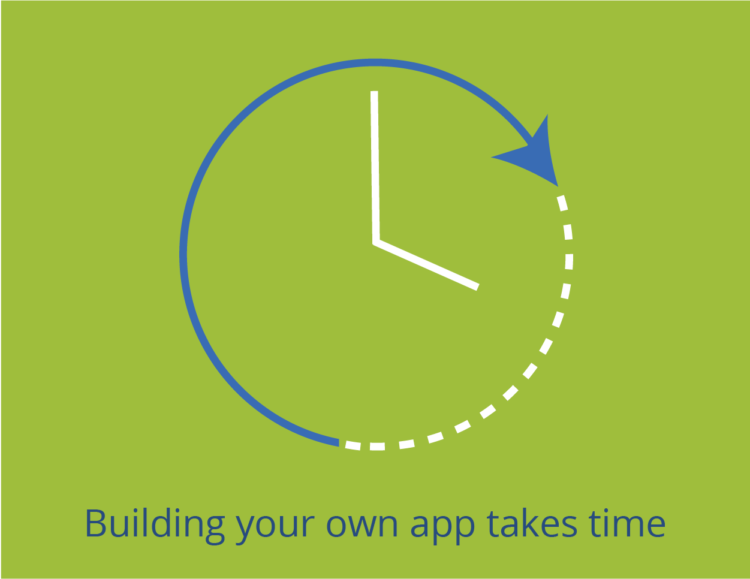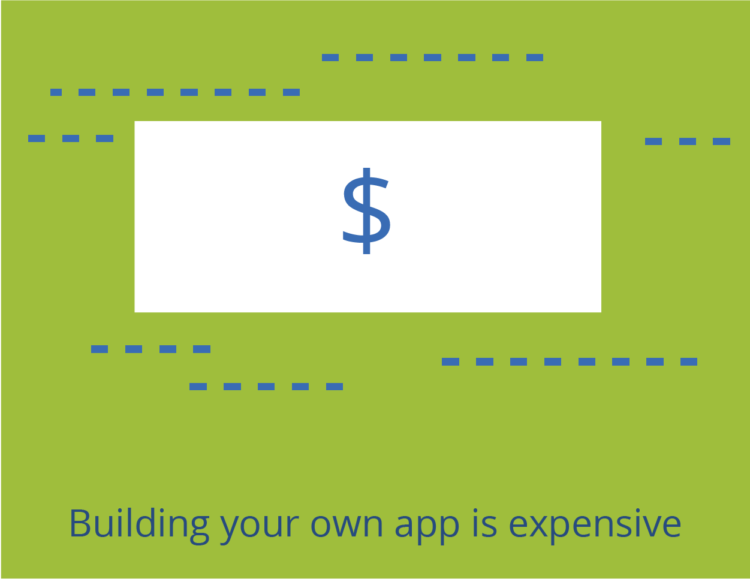At Mediafly, we’ve encountered many companies who initially tried to build their own sales app internally in place of sales enablement technology, but failed for one reason or another. When it comes to implementing content management and sales enablement solutions, it’s always better to adopt an existing solution rather than build your own. Here’s why:

Building your own app is not scalable.
Sales enablement projects are typically started with one main business challenge or use case in mind. And while building an app internally may solve for your immediate needs, it most likely won’t support the ever-changing needs of your business or your longer-term vision. Over time, the app you built will need to evolve to continually adapt to new challenges, strategies, and initiatives.
If your app has been designed to address one specific challenge or use case, what happens down the road when sales and marketing teams ask for more capabilities or software integrations with other key components of your sales tech stack? Will you have the ability and bandwidth to efficiently update and manage the product over time? Keep in mind that with the inevitable expansion and progression of your company’s challenges comes the need for additional support, product knowledge and, of course, money.

Building your own app does not provide the necessary support.
Software-as-a-service companies provide the support you’ll need when implementing any new technology. Purchasing a solution comes with the added benefit of knowledgeable product experts who can not only build the best technology but have industry best practices up their sleeves to ensure you’re getting your dollars worth.
It’s difficult for internal teams to keep up with the latest industry updates if they aren’t tasked with the development and management of this product day in and day out. Is the organization thinking of all the potential use cases this technology could be used for? Is it being used to its maximum capacity? Who is responsible for day-to-day upkeep, maintenance, and troubleshooting? Working with a seasoned technology provider will ensure you maximize your return on investment and increase the adoption of the platform you select by ensuring it truly creates new efficiencies for your sales teams.

Building your own app takes time.
How long would it take to build, test, roll out, and implement an internal technology? The answer is years. And that’s without any hiccups along the way. Be prepared to make mistakes. Be prepared to put the project on hold to focus your attention on other initiatives. If this new technology is vital to your organization, why risk the time it takes to build or its overall effectiveness? Leave it to the experts who can get your solution up and running in a matter of weeks. Spend more time tweaking the already-built solution for unique needs and less time on the bare bones.
The longer it takes to get your solution up and running, the higher your opportunity cost. Don’t miss out on the chance to differentiate yourself from your competition. Technology changes so rapidly. If you’re stuck building your own application while your competitors are taking advantage of cutting-edge technology hitting the market and rolling superior capabilities out quickly, you’re putting yourself at a disadvantage.

Building your own app is expensive.
It would cost hundreds of thousands of dollars on internal resources alone to successfully staff and deploy this project. Building a solution of this magnitude doesn’t just require a few engineers with some spare time, it requires the full attention of a dedicated team.
Creating truly innovative technology requires constant support, testing, and maintenance. Inevitable mistakes made during the building process cost money. The time it takes to fix these mistakes also comes at a price. According to Network Alliance, many organizations believe the bulk of the cost is the point of purchase, but the support, maintenance and labor costs end up accounting for 80% of the total investment.
At the end of the day, it’s important to ask yourself whether building a solution internally is creating more work, costing more money, and causing more headaches than necessary. Consider that a SaaS solution brings extensive experience, support, and innovative technologies to create the building blocks you need for a custom app experience that is faster to produce and less costly. Technology has undoubtedly enhanced the efficiency of our sales teams, but how much sooner could they be more effective and more productive if you purchased a sales enablement solution?
Most importantly, understand that while a marketed sales enablement solution may not appear to check all of your boxes, there are sales enablement technology providers who are willing to build in the additional functionality required to meet your unique business challenges at a fraction of the cost and effort it would take for you to do so on your own. Carefully vet sales enablement vendors to ensure the platform and team you elect to work with can rise to the occasion to meet your specific business needs.
To enable your sales team to sell more effectively in a matter of weeks, contact Mediafly to learn about our sales enablement technology.

Comments are closed.